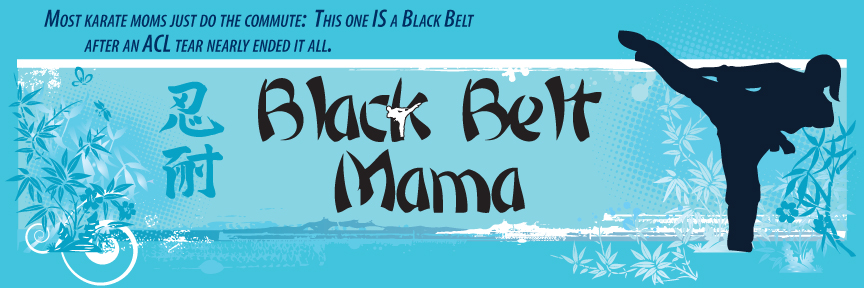July 9, 2010
How To Teach Your Kids Stranger Safety

How do you teach your kids stranger safety without scaring them?
We've all seen the news and terrible things about child abduction. A lot of people get the attitude that they have when they were teenagers themselves. "It can't happen to me." "It can't happen in this neighborhood." "It can't happen to my child."
I bet that's what Jaycee Duggard's parents thought too. . .
It's a scary thought.
After many years of martial arts training, and after hearing many horror stories, and then having two daughters…talk about stressed out.
Shortly after we moved into our neighborhood, my daughter took off on her bike down the street and around the corner. She didn't come back as soon as I would have liked her to round that corner and I was a wreck. Here, she had decided to go around the block and while I was walking down the street to find her, she pulled her bike in the garage and went inside. I didn't know it and I started searching frantically. Several neighbors were outside and I began yelling to them and asking them if they had seen her. In my head were images of a car pulling up beside her and throwing her and her bike in the trunk. I was sick about it.
My one neighbor, recognizing my panic, yelled across the street to me, "It's a safe neighborhood. That's why we moved here." She was trying to be nice and calm me down, but all I could think was "Yeah, it's safe until it's not anymore." I didn't want to be the first person to break the unsafe ice.
When I went back in to recruit my husband to help me in my search, I found her sitting on the sofa watching the Disney Channel. I wanted to kill her and rejoice with relief all at the same time. Since then, I've taught my daughters to stay within view of me (although my 9-year old is enjoying greater freedom these days which is a whole other scary issue). But how does one go about teaching children about stranger safety without scaring them half to death? And how does one teach a child that the biggest threat they face isn't necessarily from a stranger, but rather from someone your child already knows? Over 95% of bad things that happen to kids are perpetrated by someone your child already knows.
Most often, people who intend to do your child harm will start a "grooming process" where they gradually build up your child's trust in them. This can come in the form of allowing your child to do something that you might not allow them to do. They also work on the comfort level of the parent so that parents trust these people as well. The Safety Kids instructor at my dojo, D. Nowicki, strongly recommends that every parent read "Protecting the Gift" by Gavin DeBecker. A mastermind of the human psyche (both victim and predator mentality), his book "The Gift of Fear" is a must-read as well.
There is a fine line between scaring them so much that they can't sleep at night and not telling them enough to be safe. Parents have to find a happy medium.
At my dojo, they teach a class called "Safety Kids." By combining fun and games, kata and self defense, and some basic stranger safety skills, it is introduced in a safe and non-scary environment while still getting the point across. But not everyone has a Safety Kids program nearby.
So here are a couple pointers for parents that I've found really work with my kids, and I've seen it work in the Safety Kids program that my daughter did for several years. . .
First, teach them this rule that has no exceptions: "Ask first before you go anywhere with anyone for any reason. And if you can't ask first, the answer is NO!" D. Nowicki says this: "Predators need privacy to do their dirty work. You are your child's best defense. Your child needs to check with an adult that is in charge of them. At home it is you (parents); at school it is their teacher; after school it may be a babysitter or Grandma. If your neighbor comes into your yard and asks your child to help him get something out of the car, even though he may have done it a thousand times before, he still needs to come check with you first."
Second, teach your kids your first and last name. In a department store of screaming children and desensitized parents, if your child knows to yell your first and last name, you'll hear them faster than if they're just yelling "Mommy!" Think about how many Moms are in the store at one time! If you explain it to your children in this way, they're more likely to remember to yell your real name. It can be presented in a less scary fashion too. "Hey sweetie, if you lose Mommy around the clothing racks, yell my first and last name so I'm sure to hear you. Let's practice!" Practicing is key to making sure they remember to do it! Role play is a wonderful thing.
While we're on the topic of "lost in the store," another thing you can tell your child is to "glue their feet to the floor." Kids love to pretend crazy things like this anyway, and this is a great tool to keep them from wandering even further out of range. If they stay put, you'll find them faster! Although it seems unlikely that your child would do this, in a panic you just never know, so tell them to NEVER leave the store. If someone comes to their aid as they're standing in one place and yelling your first and last name, your child can tell them to find you.
Third, at Safety Kids, they always teach kids to take a giant step back when a stranger talks to them. Martial artists know how crucial it is to establish space when being confronted by someone in a threatening way. It's no different with children. That casual step back could mean the difference between someone grabbing them or not. Teaching your children to keep some space between them and other people is a good idea. You can teach your kids to take that step back without scaring them, by simply telling that that establishing space between themselves and people they don't know is a good idea. They don't have to imagine all the things parents do in their heads. If you repeat this rule enough and practice it with them, they'll remember it.
Fourth, warn them about people who may seem nice ("Can you help me find my lost puppy? Would you like some candy?) by telling them that it's not safe to take anything from strangers and that if there's a lost puppy, they should come and tell an adult they know and trust instead of searching for it on their own. Other things predators might do or say: asking for directions, asking for help unloading a van, or even asking for help getting a book at the library when the person is on crutches (This technique was used successfully by Ted Bundy). Things you can teach them are the following: Adults don't need help from children. They get help from other adults. If an adult asks your child for help, then your child should come find you so you can help. The other important thing to tell your child (and this goes for bullying at school too), is that no one has the right to touch you, move you, or do anything that makes you feel uncomfortable. The best way to get someone to stop is to say, "Stop or I'll tell." D. Nowicki says "predators go for the weak. The thing they fear is being discovered." And remind your child that they should tell whether the person stops or not.
With women's self defense classes, we teach "Avoid, Escape, Report," and with children, we teach "Say No, Get Away, Tell Someone." It's crucial that your child tells someone until they find someone who believes them.
Finally, it's important to teach your children the best people to ask if they need help. Statistically speaking, the best person to ask is a woman. Sorry guys, but 95% of predators are men, not women. If you're out somewhere and you need to ask a stranger for help, you have a 1 in 10,000 chance of having a predator come to your aid. However, if you choose the stranger to ask for help, your odds get a lot better. You have a 1 in 100,000,000 chance of asking a predator for help. You're more likely to have a winning lottery ticket and get struck by lightening while wearing socks that don't match on a Tuesday, says D. Nowicki. When you need help, talking to a stranger can be the right thing to do. Kids need to know that strangers aren't always bad people, but rather just people they don't know.
If your child is lost in a store and needs to ask for help, their best bet is to ask a Mom who has other kids with her. Statistically speaking, their next best bet is to ask any other woman for help. D. Nowicki suggests walking around a big store with your kids and asking them who they would ask for help if they couldn't find you. Let them make smart choices and have them explain their answer. Then let them try asking that person what time it is with you nearby. You can teach them that not all stranger interaction is a bad thing. They just need to do it in a smart way.
Culturally, women are brought up to be nice and children are raised to respect their elders. It's important to teach them that it's ok to say "no" to an adult and that they don't have to do what an adult wants them to do just because that person is an adult.
Last but definitely not least is an important fact. Sometimes a little bit of fear drives the point home in just the right way. There are scary things happening in the world around us at times, and it's just not possible to shelter your kids from everything, all the time. We teach them not to chase their ball into the street because cars might be coming. They know what can happen if they chase that ball without looking first. If they run into the street, they could get hit and hurt, or even worse. If a child is having a particularly difficult time following that rule, as parents, we ramp it up and infuse a little fear. It's not always a bad thing to introduce fear. It's just important that you do it in the right way.
For more information on keeping your children safe, visit the Safety Kids website. Thank you to D. Nowicki, the Safety Kids teacher at my dojo, for a wealth of help with this post.
For more information on this topic, please visit BlogHer, where I am hosting the $100 question. Simply log in at BlogHer, answer the question, and you might win $100!























It is scary being a mommy and letting your kids play outside. My oldest is just 5 and I do not know if I will ever allow him to play outside without me around. He will have to bring his friends to my house. Here is a good site about child safety and preventing them from getting taken by abductors, but I am still going to be the mommy that holds on tight:
http://www.ikidsafety.com